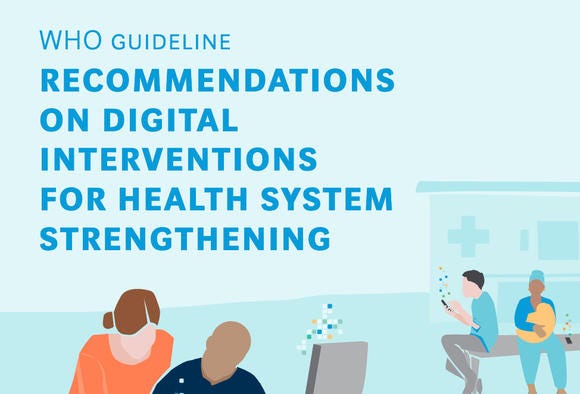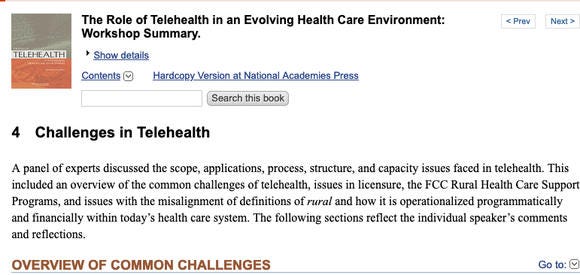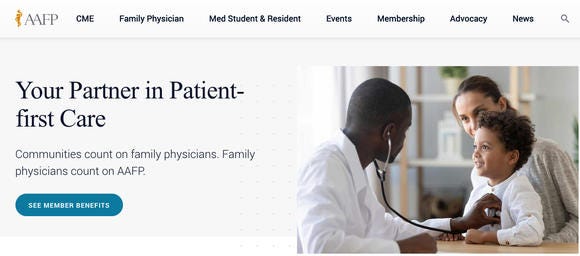The Role of Telemedicine in Advancing Medical Cannabis Accessibility
Written on
Telemedicine's Impact on Healthcare and Cannabis Accessibility

Recent advancements in technology have significantly influenced public health. Innovations across various sectors, particularly in biotechnology, artificial intelligence, and genetics, have led to improved health outcomes, reduced suffering, and increased longevity.
The World Health Organization (WHO) points out that the widespread availability of mobile devices and digital tools has transformed health management. As noted, "Today, we have access to more health information—both accurate and misleading—than any previous generation."
However, the rise of digital technologies also brings challenges, creating confusion and chaos. With new devices and software emerging constantly, clarity and structure are essential, and WHO has been a key player in this regard.

The WHO emphasizes the need for equitable access to digital technologies. They advocate for countries to rely on evidence-based practices to develop sustainable digital systems rather than becoming overly enamored with the latest gadgets.
In New Jersey, Governor Phil Murphy has indicated a conditional veto regarding telemedicine legislation, underscoring the necessity for intentional integration of technology into healthcare practices. The National Center for Biotechnology Information (NCBI) highlights that incorporating technology into medical care must be carefully designed, identifying seven primary obstacles: funding, regulation, hype, adoption, technology, evidence, and success.

While a detailed discussion of these barriers is beyond this article's scope, it is crucial to note that approximately 42 million Americans lack broadband access, a significant issue that must be addressed.
On a positive note, a survey by the Pew Research Center reveals that "90% of Americans are online, with 81% owning smartphones, nearly 75% possessing desktop or laptop computers, and around 50% having tablets or e-readers."
Although digital health concepts like eHealth and mHealth have been around for some time, terms like telehealth and telemedicine gained popularity during the COVID-19 pandemic, particularly after March 2020.
The term digital health encompasses the use of various digital technologies in healthcare, including eHealth, mHealth, and information technology domains like big data and the Internet of Things. The acceptance of mHealth has grown, thanks to mobile technology like smartphones.
Telemedicine has evolved with the introduction of supportive telecommunications devices, enhanced video technology, and smart applications. WHO defines telehealth as the foundational aspect of eHealth, utilizing telecommunications to provide healthcare outside traditional settings.
NCBI reports that approximately 10 million patients in the U.S. utilize telemedicine services annually, often without realizing it. This indicates both success and the integration of telemedicine into healthcare networks.
Key applications of telemedicine include remote diagnosis, post-care support, and ongoing patient monitoring. Research published in the BMJ Open journal by Dr. Clemens Scott Kruse and his team indicates a steady increase in telehealth usage, with early adopters striving to deliver quality care. Patient satisfaction serves as a vital metric for telemedicine's effectiveness.

The rise of telehealth gained traction in the U.S. following breakthroughs in telecommunications. A 2017 survey revealed that "one in five consumers would prefer a doctor offering telehealth services."
The number of telehealth visits surged in 2020. According to the CDC report titled "Trends in the Use of Telehealth During the Emergence of the COVID-19 Pandemic," telehealth visits increased by 154% during the last week of March 2020 compared to the previous year, likely due to pandemic-related policy changes.
The CDC's findings highlight the advantages of telehealth during and after the pandemic, such as improved access to care, reduced exposure to diseases for both patients and healthcare staff, conservation of personal protective equipment, and less strain on healthcare facilities. Ongoing telehealth policy adaptations could further enhance access to care.

This article aims to provide context for New Jersey Bill #2559, which revises health insurance and Medicaid requirements to cover telemedicine and telehealth services, allocating $5 million for these initiatives.
To grasp the bill's implications, one must consider New Jersey's 2017 law (P.L. 2017, c.117), which defines telehealth as "the use of information and communication technologies to support clinical healthcare, practitioner consultation, and health education." Meanwhile, telemedicine is described as the delivery of healthcare services through electronic means, excluding isolated audio-only communications.
New Jersey's government outlines qualified healthcare professionals as those licensed in various medical fields, including physicians, nurses, and therapists.
The significance of Bill #2559 has been recognized by the American Telemedicine Association (ATA), which expressed support for the bill and any amendments aimed at enhancing patient access to safe and affordable care.

The ATA represents a wide network of technology providers, healthcare systems, and allied organizations focused on advancing telehealth adoption, responsible policy, and educating stakeholders to integrate virtual care into emerging healthcare models, thereby improving access for New Jersey residents.
In February 2021, Governor Murphy signed significant cannabis reform bills into law. In April 2021, he conditionally vetoed a proposal allowing telehealth visits for medical marijuana authorization, urging lawmakers to instead pursue broader telemedicine access measures.
On June 24, the S-619/A1635 bill was passed, allowing telemedicine and telehealth to authorize patients for medical cannabis and issue dispensing instructions.

This development is generating attention in New Jersey's media. Governor Murphy plans to deliver a conditional veto regarding Senate Bill S-3658/A-5641, which seeks to eliminate mandatory minimum prison terms for non-violent offenses.

While telehealth and telemedicine offer promising solutions, they are not a catch-all remedy. Many healthcare issues still require in-person attention. Additionally, not all individuals have a secure environment at home, and access to necessary internet tools and medical devices can be limited. For further insights, the AAFP Foundation provides a report on the multifaceted aspects of telemedicine.

Telemedicine affects not only financial and legal dimensions but also educational aspects. Both patients and healthcare professionals face a learning curve. Public awareness of policy changes is crucial, and medical providers require further training to navigate the nuances of telemedicine and telehealth, necessitating new credentials.
These credentials entail a thorough evaluation of processes and logistics, particularly in sensitive health discussions that must be conducted virtually.
Moreover, ensuring the safety and security of telehealth practices necessitates extensive dialogue and improved governance by regulatory bodies.
Telemedicine and telehealth signify a transformative shift in healthcare, driven by technological advancements. They have gained substantial traction globally, especially during the COVID-19 pandemic. Nonetheless, many people may continue to need telehealth services after the pandemic, highlighting an important societal concern.
For a forward-looking perspective on the intersection of medicine and technology, I recommend viewing this insightful TEDx Talk.
Thank you for exploring my insights. I wish you a healthy and fulfilling life.